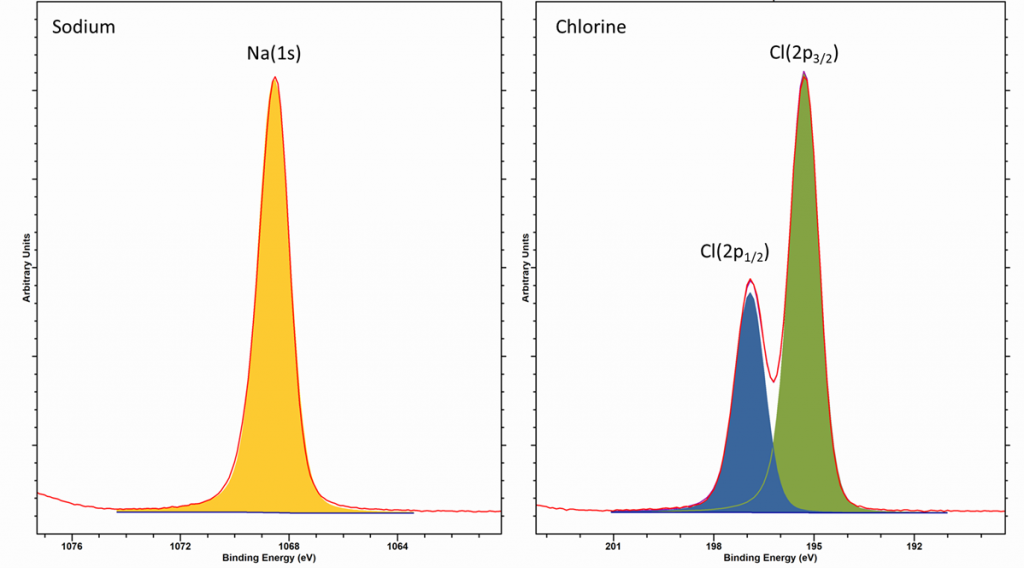Spin-Orbit Splitting
For core-levels other than s-orbitals, peaks will be split due to spin-orbit splitting.
Core levels in XPS are defined by the terminology nlj, where
- n is the principal quantum number
- l is the angular momentum quantum number
- j = l + s (where s is the spin angular momentum number and equals ±½).
All orbitals except the s-orbitals (l = 0), yield a doublet with the two possible states having different binding energies – this differece between the peaks is termed spin-orbit splitting (also known as j-j coupling).
Due to the physics of this phenomena, the peaks will have a defined area ratio based on the degeneracy of each spin state. This can be seen in the figure for NaCl below.
In this example, for the Cl(2p) spectrum, n = 2 and l = 1, therefore j = 1/2 and j = 3/2. The area ratio, or degeneracy, between these spin-orbit split peaks is then given by 2j + 1, or 1:2; This corresponds to 2 electrons in the 2p1/2 level and 4 electrons in the 2p3/2 level.

t is highly important these ratios are taken in to account when analysing XPS spectra of p, d and f -levels. The table below shows the different spin combinations that can give rise to the total j and the expected area ratio.
| Orbital | j Value | Area Ratio |
| s | 1/2 | Not applicable |
| p | 1/2 & 3/2 | 1 : 2 |
| d | 3/2 & 5/2 | 2 : 3 |
| f | 5/2 & 7/2 | 3 : 4 |
Unless very high resolutions are used then some spin-orbit splitting cannot always be resolved or is obscured by peak broadening in difference chemical states of the same element (e.g. Si(2p) peak in elemental silicon can be resolved, where as it cannot in SiO2)
The magnitude of the splitting increases with atomic number (Z) and decreases with distance from the nucleus due to increased shielding of the nuclear charge.
Further Reading
- D. Briggs, XPS: Basic Principles, Spectral Features and Qualitative Analysis, in: D. Briggs, J.T. Grant (Eds.), Surface Analysis by Auger and X-ray Photoelectron Spectroscopy, IM Publications, Chichester, 2003, pp. 31-56.
- J.F. Moulder, W.F. Stickle, P.E. Sobol, K.D. Bomben, Handbook of X-ray Photoelectron Spectroscopy, Perkin-Elmer Corp, Eden Prairie, MN, 1992
- NIST XPS Database – Has list of spin-orbit splitting values